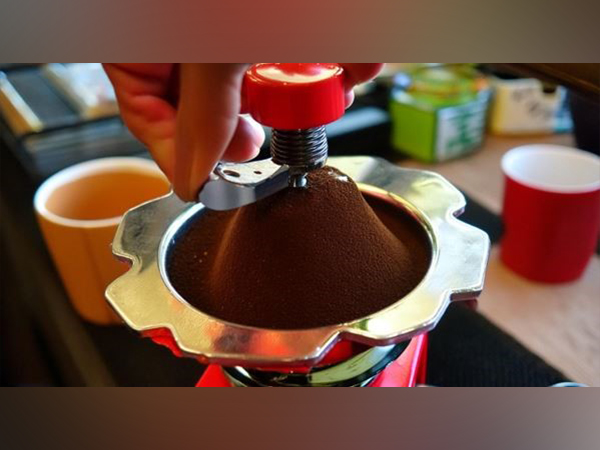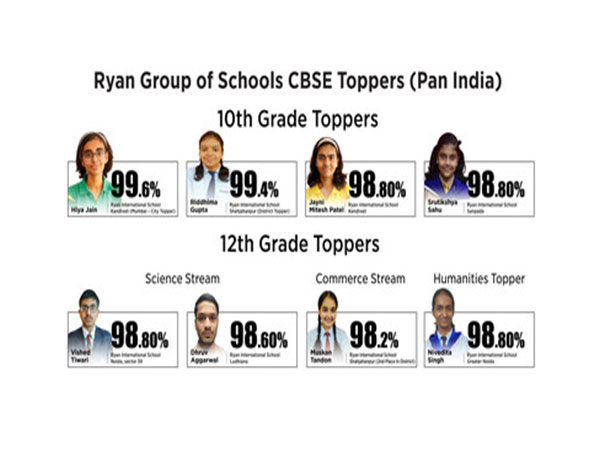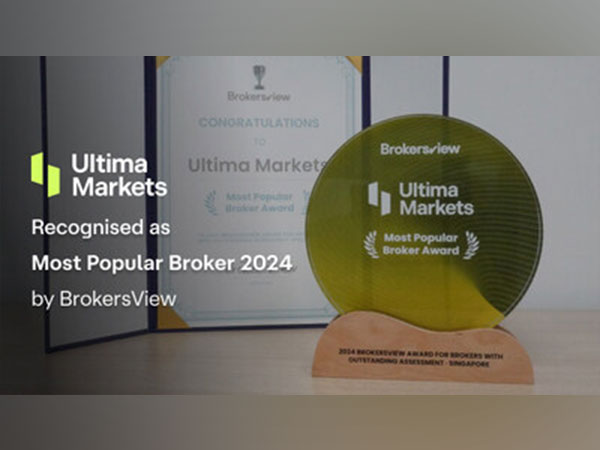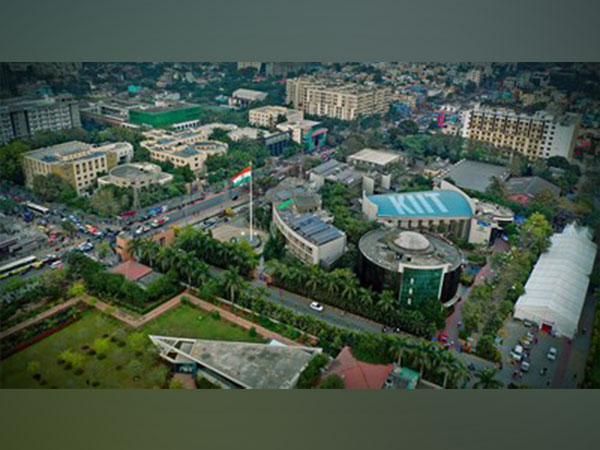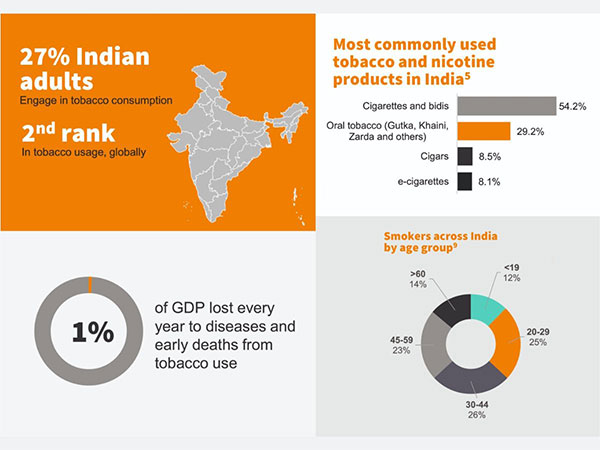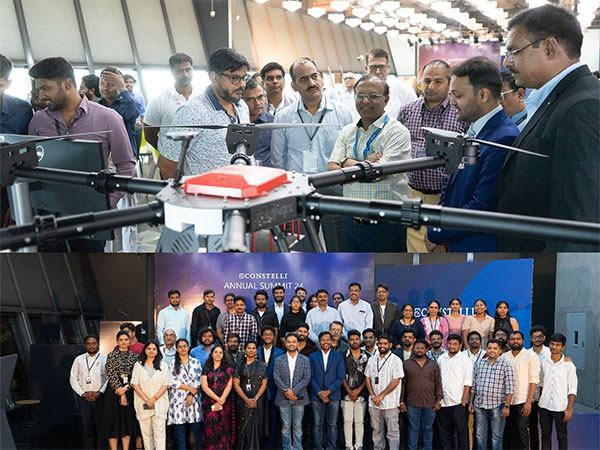What's The Best Coffee Grind For Vietnamese Coffee?
Apr 29, 2024
VMPL
New Delhi [India], April 29: When brewing Vietnamese coffee using a traditional phin filter -- opt for a medium-fine grind.
As coffee lovers all over the world know, pre-ground coffee doesn't have the same flavor and aroma as freshly ground coffee. The grinding process, recommended right before you brew, produces a more robust flavor, making every cup of coffee as flavorful as possible.
Of course, you can't just grind away and expect a good cup of coffee. The beans need to be ground according to the brewing method you're using, whether it's pour-over, espresso, drip, French press, or a phin filter style.
In this article, you'll learn about the perfect Vietnamese coffee grind size and how it affects the brewing process.
Vietnamese Coffee Grind Size
Grinding your coffee beans to the correct size is imperative if you want your Vietnamese coffee to be flavorful. If you grind your coffee beans too much, water won't flow through the phin. If you don't grind enough, water will flow too fast, and your coffee will lack flavor and depth.
With the phin filter (the traditional method for brewing Vietnamese coffee), the ideal grind size is medium-fine or fine. Some people like using a finer grind to produce an even stronger brew, but with the added risk of clogging. Others prefer a coarser medium-fine grind to prevent clogging and produce a brighter, lighter coffee.
If brewing your Vietnamese coffee using other tools, you'll have to adjust the grind to match:
* Phin filter -- medium-fine or fine
* French Press -- Coarse or medium-coarse grind
* Aeropress -- Fine grind
* Immersion Cold Brew -- Coarse grind
* Drip Coffeemaker -- Medium grind
* Espresso -- Fine grind
* Moka Pot -- Fine Grind
Grind Size: Why Does Size Matter?
The grind size of the beans plays a key role in preparing Vietnamese or any kind of coffee. There's a general rule for grinding size: the longer the coffee takes to brew, the coarser the beans should be. Less time = finer grind.
Grinding the beans allows more surface area to come into contact with the water. The coffee's compounds are extracted, and coffee is made. If the beans are too coarse, many of the compounds don't have time to be extracted, and your coffee will lack character.
But that doesn't mean we grind the beans into a powder because then we have the problem of over-extraction, and that's not good, either. That's how your coffee ends up bitter, acidic, and hard to drink.
There's also the matter of convenience and minimizing unnecessary irritations. Who wants their cup of coffee to be delayed or ruined? Especially if it's first thing in the morning. No thanks.
Here's what happens. If the grind is too fine, they'll clog the filter holes. The result? Water won't go through, and coffee won't drip into the cup.
If the beans are too coarse, water will flow through the filter too quickly without extracting all of the coffee's compounds. The larger grounds create too much space for water to leak through and don't allow enough time for the coffee to steep.
How to Grind Coffee Beans
Grinding coffee might seem like a simple task. However, you may not get it right on the first try. Coffee is an art and a science, and getting the right grind takes practice.
How you go about it depends on which kind of grinder you have. Some work by pushing a button, and it grinds until you let off. Others have settings that allow you to choose the grind, and it'll stop on its own.
If you have the former, just start by grinding for a few seconds, then check the beans and give them a stir; repeat until they're at the right grind. Stirring the beans helps with consistency.
If you have a grinder with settings, follow the manufacturer's directions for how to use it.
4 Types of Coffee Grinders
If you don't already have a grinder, here are some of the options:
* Blade grinder -- This grinder features a single blade at the bottom of a vessel and different speed settings. It works best for coarse to medium grinds, as it generally produces uneven results. These are usually the cheapest kind.
* Hand grinder -- These types usually use a hand-cranked mortar and pestle action to grind the beans. It's time-consuming to use and can only make limited quantities at a time, but it's one of the best options for preserving flavor and creating consistent grind size.
* Burr grinder -- This device contains multiple blades, producing a more even grinding. With this kind, you can grind coffee beans as fine as necessary, and it's great at giving a consistent grind.
* Conical burr grinder -- This kind of grinder is used in most coffee shops because it can grind coffee to the perfect size and texture.
Tips for Making the Perfect Cup of Vietnamese Coffee
There are other factors to consider when making Vietnamese coffee -- all work together to create the perfect cup.
1. Choose the Right Coffee
The first is the kind of bean you use. Traditional Vietnamese coffee requires a strong robusta coffee, such as Cafely's HaNoi Coffee. The coffee is paired with sweetened condensed milk, creating a smooth, flavorful drink.
You can also go with a robusta and arabica blend like SaiGon OG Coffee if you don't feel ready for a 100% robusta. This variety has the bold flavors of robusta beans combined with arabica's sweeter, fruity aromas.
2. Grind Right Before Brewing
Grinding coffee beans before preparing coffee is the best option to guarantee that your coffee will be fresh and full of intense aroma and flavor. The longer the ground coffee sits, the more it degrades.
3. Use Fresh Coffee Beans
When coffee beans are heated, they begin emanating carbon dioxide and natural gases, which is called blooming. This process lasts up to 14 days and is when the coffee will be the freshest.
The next step in blooming coffee involves pouring small amounts of water into the center of your coffee bed and waiting. The coffee only takes a few seconds to start emanating carbon dioxide. One of the main indications that your coffee is blooming is the presence of bubbles and foam on top of the coffee.
If this doesn't happen, it could mean that your coffee beans have already degassed and are no longer fresh.
Here are some recommendations to prevent degassing:
* Keep your coffee in airtight containers.
* Don't expose your coffee container to extreme heat as it could make the coffee beans degas faster.
* Darker roast coffee tends to degas less than lighter ones, so choose your coffee beans appropriately if you want to make your coffee bloom.
* Excess heat and humidity will both affect the freshness of your coffee. To keep it fresh, store it at an even temperature.
FAQs: Coffee Grind Size
You might still have questions, and we would love to give you the answers.
1. What is the ideal grind size for brewing Vietnamese coffee using a phin filter?
For brewing Vietnamese coffee with a traditional phin filter, the ideal grind size is medium-fine or fine. The precise grind size can be adjusted slightly to avoid clogging the filter or achieve a stronger brew.
2. Why does the grind size matter when making coffee?
Grind size is crucial because it affects water flow and extraction efficiency. For a phin filter, too fine a grind can clog the filter, while too coarse a grind allows water to flow too quickly, resulting in weak coffee.
3. How should coffee beans be ground for different brewing methods?
Depending on the brewing method, coffee beans should be ground to varying sizes: medium-fine or fine for phin filters, AeroPress, moka pots, and espresso machines, medium for drip coffeemakers, or coarse for the French press.
4. What are the types of coffee grinders available, and which is best for Vietnamese coffee?
There are four main types of coffee grinders: blade grinders, hand grinders, burr grinders, and conical burr grinders. For Vietnamese coffee, a burr grinder or a conical burr grinder is recommended for achieving a consistent medium-fine to fine-grind.
5. What tips can help in making the perfect cup of Vietnamese coffee?
To make the perfect Vietnamese coffee, choose the right type of coffee bean (strong robusta or a robusta-arabica blend), grind the beans right before brewing, use fresh coffee beans, and store beans in airtight containers away from heat and humidity to preserve freshness.
Check out our premium SaiGon OG coffee blend, which is ideal for using the traditional phin filter.
6. Is Vietnamese coffee high in caffeine?
Yes, Vietnamese coffee has high caffeine content. Vietnamese coffee beans are typically robusta, which has almost twice as much caffeine as arabica beans. On top of this, Vietnamese coffee generally has a long brew time which extracts more of the caffeine than conventional American coffee.
Two ounces of Vietnamese coffee contains up to 100 mg of caffeine.
7. Is Vietnamese coffee high in calories?
Vietnamese coffee that contains sweetened condensed milk has relatively high calories compared to black coffee -- but it's comparable to a traditional latte or cappuccino.
The traditional Vietnamese coffee recipe contains 2-3 tablespoons of condensed milk, which can add about 120-180 calories.
8. What if I don't have a phin filter to make Vietnamese coffee?
While a phin filter is the most traditional and preferred method, you're not at a loss if you don't have one. They're relatively inexpensive, and you can buy Cafely phin filters on our online shop. However, phin filters aren't the only way to prepare Vietnamese coffee.
The stronger, the better, so espresso or moka pot works well. A French press or pour-over can work, too, but you may need to increase the coffee-to-water ratio to get the strong, bold flavors this coffee preparation method is known for.
(ADVERTORIAL DISCLAIMER: The above press release has been provided by VMPL. ANI will not be responsible in any way for the content of the same)
